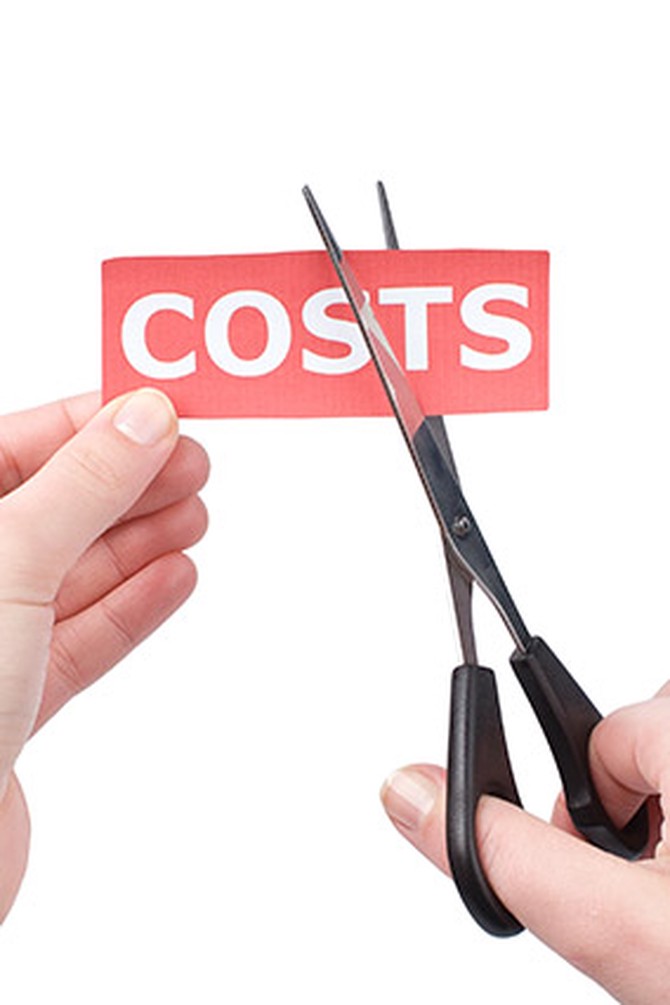4 Major Money Traps to Avoid
They're out there just waiting...here's how to sidestep them.
By Nathalie Gorman

Photo: Thinkstock
The Trap: Overlooking Invisible-Until-Now 401(k) Fees
A recent AARP study found that 71 percent of Americans think they don't pay any fees for their 401(k) plan. Actually, every 401(k) plan out there charges fees to every single one of its investors. For small plans, it can be as much as 2 to 3 percent of your investment. For large companies, it can be less than 1 percent, explains Mike Alfred, co-founder and CEO of BrightScope, a company that analyzes retirement plans. This might sound like a teensy fee, but it can make a big difference. For example, imagine that you were to invest $15,000 total in a 401(k) fund that earns 7 percent interest and has a 6 percent yield. In 30 years, a fund for which you pay a 1 percent fee would be worth $86,152. By contrast, a fund for which you pay a 3 percent fee would be worth $48,651. So, a 3 percent fee means that your fund would have half the worth of a fund for which the fee is 1 percent.
The Solution: It used to be that plan sponsors (i.e. employers) were not obligated to disclose the rate at which employees were charged for contributing to their 401(k) accounts. That has all changed as a result of new Department of Labor regulations that went into effect July 1, 2012. The amount that you pay in fees must be made plain on your statement, just like your bank lets you know when they've charged a fee to your account. It may be in the fine print on page 7 of 8 in an attempt to dissuade you from looking for it, but it's definitely there. The next time you receive a statement, take a look and figure out what kind of fee you're being charged. If you're concerned by it, dig out that HR packet and see if your company offers plans with different fees. Then, if it does, make a note to remind yourself to change funds during the opt-in period that usually happens at the end of the year. (If your company doesn't offer reputable funds with low fees, you might want to talk to your HR department to see if they will be including one for the next opt-in period.)
The Solution: It used to be that plan sponsors (i.e. employers) were not obligated to disclose the rate at which employees were charged for contributing to their 401(k) accounts. That has all changed as a result of new Department of Labor regulations that went into effect July 1, 2012. The amount that you pay in fees must be made plain on your statement, just like your bank lets you know when they've charged a fee to your account. It may be in the fine print on page 7 of 8 in an attempt to dissuade you from looking for it, but it's definitely there. The next time you receive a statement, take a look and figure out what kind of fee you're being charged. If you're concerned by it, dig out that HR packet and see if your company offers plans with different fees. Then, if it does, make a note to remind yourself to change funds during the opt-in period that usually happens at the end of the year. (If your company doesn't offer reputable funds with low fees, you might want to talk to your HR department to see if they will be including one for the next opt-in period.)

Photo: Thinkstock
The Trap: Falling for the Discount Card at the Gym
Buying a monthly class card might seem like an easy way to get in shape—you can try yoga one month, Pilates the next, and you get a discount on the price of the classes for buying the card. You convince yourself it's cheaper to buy the class pack to save $2 or $3 per class than it is to pay as you go. But Ramit Sethi, author of I Will Teach You to Be Rich, says that people overestimate how much they'll exercise by up to 70 percent. So the 10 kickboxing classes you've convinced yourself you're going to? You'll probably make it to two or three of them—at which point that 30-day card won't look like such a hot deal.
The Solution: For one month, pay for each class you go to individually. If you end up going to 10 classes, then you'll know for sure that the class card is a good deal going forward. If you have a fabulous time at yoga...but only go twice, you might stick to paying on a per-class basis.
The Solution: For one month, pay for each class you go to individually. If you end up going to 10 classes, then you'll know for sure that the class card is a good deal going forward. If you have a fabulous time at yoga...but only go twice, you might stick to paying on a per-class basis.

Photo: Thinkstock
The Trap: Binging on Phone Apps
That app that your friend has that does the cool thing with the pictures of cats is essential. So is 1Password, because without it, how would you ever remember the gazillion different variations on the name of your elementary school that you use every day? There's just one hiccup: "The average person has—at last count—over 50 apps," says Darren Murph, managing editor of Engadget, but most people actually use 10 or less on a regular basis. Given that some apps cost $10 or more, you may find you're spending hundreds of dollars a year on things you don't end up using more than once or twice.
The Solution: If you're an Android user, Murph suggests taking advantage of the trial period provided by the app store, which lets you download an app for a certain amount of time before you either pay for it or let it lapse. If you use the new app every day, great! If not, poof! It disappears at the end of the trial.
Windows or iPhone users can take an inventory of most-used apps. Then, pick one app category on which you're willing to spend money, and as for the rest, promise yourself that you'll look for free alternatives. For example, if you really like having Mint on your phone so that you can get text messages about spending, or if you're deeply attached to Evernote because it syncs notes that you make on your phone and your computer, then you'll want to spend on utility apps. So reserve your splurges for the next great one that comes out—and stick to the free version of Angry Birds.
The Solution: If you're an Android user, Murph suggests taking advantage of the trial period provided by the app store, which lets you download an app for a certain amount of time before you either pay for it or let it lapse. If you use the new app every day, great! If not, poof! It disappears at the end of the trial.
Windows or iPhone users can take an inventory of most-used apps. Then, pick one app category on which you're willing to spend money, and as for the rest, promise yourself that you'll look for free alternatives. For example, if you really like having Mint on your phone so that you can get text messages about spending, or if you're deeply attached to Evernote because it syncs notes that you make on your phone and your computer, then you'll want to spend on utility apps. So reserve your splurges for the next great one that comes out—and stick to the free version of Angry Birds.

Photo: Thinkstock
The Trap: Starting a Radical Spending Diet
As any dieter who's cut carbs, alcohol and red meat out of her diet knows, it'll go really well...for two weeks. Then one night you'll end up sitting at the table wondering how you managed to consume five muffins, two burgers and four glasses of wine over an 11-hour span. The same is true with money. You can't cut back in every area of your life at the same time; it's just too hard. At some point, you'll find yourself on the other side of a shopping binge.
The Solution: Try Sethi's two-pronged saving strategy. Here's how it works: Looking at your bank and credit card statements, categorize everything you've spent money on in the last month. Then, pick your two biggest discretionary expenses, for example, eating out and buying beauty products. Make a promise to yourself to reduce just those two by 25 to 30 percent over the next few months. Eventually, your new budget will feel normal, and you can move on to cutting another set of expenses without getting overwhelmed.
Next: 6 money lies we tell ourselves
The Solution: Try Sethi's two-pronged saving strategy. Here's how it works: Looking at your bank and credit card statements, categorize everything you've spent money on in the last month. Then, pick your two biggest discretionary expenses, for example, eating out and buying beauty products. Make a promise to yourself to reduce just those two by 25 to 30 percent over the next few months. Eventually, your new budget will feel normal, and you can move on to cutting another set of expenses without getting overwhelmed.
Next: 6 money lies we tell ourselves
Published 09/27/2012
Please note: This is general information and is not intended to be legal advice. You should consult with your own financial advisor before making any major financial decisions, including investments or changes to your portfolio, and a qualified legal professional before executing any legal documents or taking any legal action. Harpo Productions, Inc., OWN: Oprah Winfrey Network, Discovery Communications LLC and their affiliated companies and entities are not responsible for any losses, damages or claims that may result from your financial or legal decisions.

